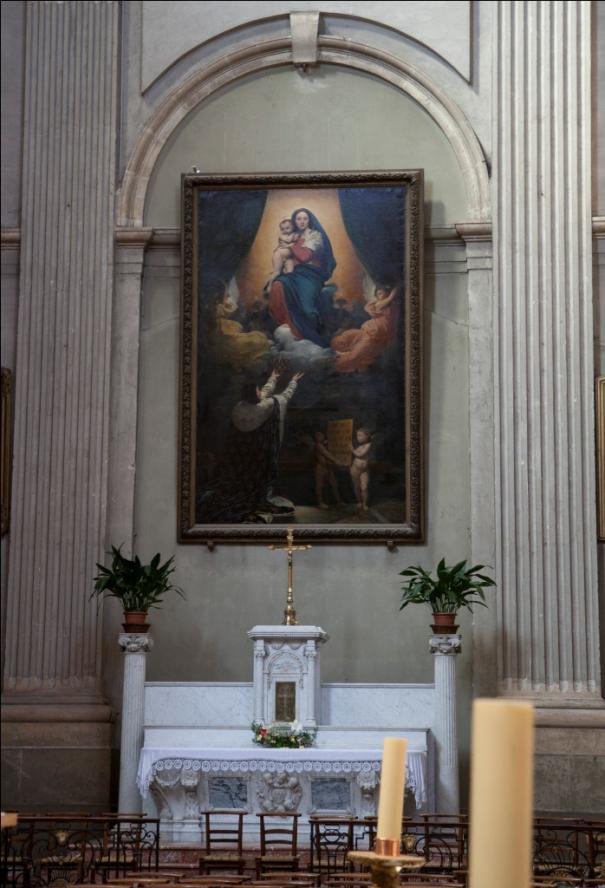Vow of Louis XIII
Documentation:
The French writer Stendahl (Henri Beyle) did not like Ingres’s Vow of Louis XIII when he saw it at the Salon of 1824:
“I…wanted to see a new work which is very well spoken of: M. Ingres’s picture – only recently hung in the main gallery – representing Louis XIII placing France under the protection of the Holy Virgin. In my opinion, at least, it is a very dry piece of work and, what is more, a pastiche of the old Italian painters. The Madonna is beautiful enough, but it is a physical kind of beauty, incompatible with the idea of divinity. This is a psychological, not a technical defect, and is still more glaringly apparent in the child Jesus, who, although very well drawn, could not possibly be less divine. The celestial expressions and religious unction essential in such a subject are completely absent from the characters in this picture….As an intelligent man, how can M. Ingres have failed to see that when the action of a religious picture is not intrinsically moving, the painter must deploy still greater unction in order to captivate the spectator’s emotions? The angels on either side of M. Ingres’s picture holding back a heavy curtain are very dryly painted; the same is true of their draperies. The small cloud underneath the Virgin looks like marble, and there is a general crudity about the coloring.
Louis XIII’s gesture is animated, but nothing about him suggests the king of a great realm imploring divine benevolence for all his subjects. His little Spanish moustache is practically all that we can see of his face and creates a somewhat mean impression. After so many criticisms of M. Ingres’s work, I still think the Vow of Louis XIII is one of the best religious pictures at the exhibition. It greatly improves on a second viewing, and will improve still further when it is hung in a church and has to be looked at for an hour on end.”
Translated and reprinted in David Wakefield, ed., Stendahl and the Arts (New York: Phaidon, 1973), 114-15.
Elizabeth Prettejohn suggests that the crisis in the Academy first became apparent in the Salon exhibition of 1824:
"Ingres's The Vow of Louis XIII is pious and patriotic...Delacroix's Scenes from the Massacres of Chios, on the other hand, is modern and activist...In every aspect of pictorial style, too, the two pictures are starkly contrasted. Symmetry, simplicity, balance of complementary colors, and precision in drawing all contribute to the sense of hushed contemplation in the Ingres; complicated figure groupings, contorted poses, scattered accents of color, and energetic brushwork convey the disarray and sheer horror of Delacroix's massacre.
Thus in both subject-matter and style the two pictures represent the battle between Classicism and Romanticism [in the French Academy], at the heady moment of its emergence.”
Elizabeth Prettejohn, Beauty and Art (Oxford: Oxford University Press, 2005), 78-9.
About the Artist
Died: Paris, 14 January 1867
Nationality: French


 Buy the Book
Buy the Book